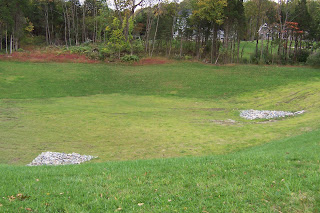Why Use Native Plants?
Beginning this weekend and continuing through September 16th, the fall plant sale at Bowman’s Hill Wildflower Preserve, http://www.bhwp.org, in New Hope Pennsylvania, features native wildflowers, vines, ferns, shrubs and trees. The Preserve waives their usual entry fee during the sale, so you’ll have a chance to explore the 134 acres while you’re there.
Although there is some difference of opinion, native plants are basically those that originated in an area prior to the European colonization of the Americas in the 1600s. Confusion arises because many of the plants that now grow wild in our region, such as English daisies and Queen Anne’s lace, were introduced early in the colonial era and have been here for more than 100 years. But these are actually naturalized non-natives.
Native plants, by contrast, evolved over geological time, adapting to soil and climate conditions, as well as to the animals, birds, reptiles, insects, etc. that inhabit the same ecological niche. Because they “grew up” in a specific place, native plants are well-adapted to it, making them much more resistant to disease and the vagaries of the weather. When planted in an appropriate spot, they require minimal maintenance: Less fertilizer, pesticides, and watering than non-native landscape plants. In the Mid-Atlantic region, native plants offer an abundance of color and texture, through their buds blossoms, bark, and berries. Many native plants also attract more wildlife, such as birds and butterflies, than their cultivated counterparts.
One of the most damaging aspects of suburban development is the fragmentation of natural habitats (see my blog on detention basins for just one example). Some species, such as certain types of turtles, require a surprisingly large and diverse roaming area that includes both wetlands and uplands. Habitat fragmentation disrupts natural ecosystems, interferes with the movement of species, and, over time, removes critical habitat from a location.
While it is a poor substitute for preservation, where the damage has already been done, each of us can play a part by including native plants in the garden. This can help create corridors for wildlife to travel back and forth between habitat patches that have become disconnected. Better still would be to spread the word to neighbors, or your homeowners’ association, and mount a co-operative restoration effort.

